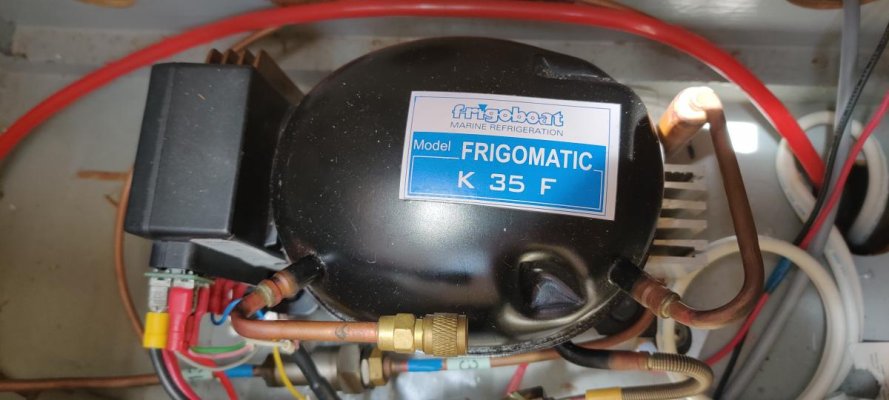SchoonerSkipper
Member
We have a new-to-us Transpac Eagle 32 trawler outfitted with a Frigoboat K35F refrigeration system, 2009 vintage, keel-cooled. The unit runs when I turn it on and the thermostat and speed control panel power up; thermostat is set to 35 degrees Fahrenheit. But the unit does not cool. The black condenser tank gets very warm to the touch (the paperwork seems to indicate this is normal).
I’m starting to troubleshoot the system to try to figure out what’s wrong, but I have a question that I don’t see addressed anywhere in the paperwork on what I’ve found so far with the manufacturer on-line: once I start up the system, how long should I let it run before I start to have either some coolness in the box/plate, or sweat or frost? I mean, minutes, hours, overnight, what? At least enough to tell me that the system is basically working. Assume 75-80 degree ambient air temperature (we’re in Pensacola, FL).
I’m starting to troubleshoot the system to try to figure out what’s wrong, but I have a question that I don’t see addressed anywhere in the paperwork on what I’ve found so far with the manufacturer on-line: once I start up the system, how long should I let it run before I start to have either some coolness in the box/plate, or sweat or frost? I mean, minutes, hours, overnight, what? At least enough to tell me that the system is basically working. Assume 75-80 degree ambient air temperature (we’re in Pensacola, FL).

